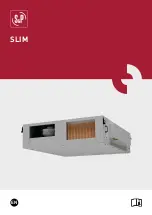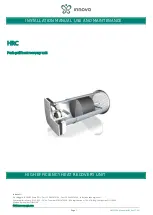
Options
4
BAL_K32_K42_ST_EN_1V2_REC_121-006454613
25 / 48
4.6
Key emergency operation switch
CAUTION
Sensors and safety strips are disabled in the emergency operation mode!
a) Personal or property damage
ð
In case of emergency press the emergency stop button.
If the operation of the door is prevented, for example by a defective sensor, the turnstile can
still be rotated to a desired position in both directions of rotation by an authorized person via
the key emergency operation switch (see Safety and operating components legend).
Function: triggers a rotation at reduced speed. Can ignore safety sensors. The emergency
stop button remains the overriding function.
Switch
Operating mode Function
activated
Emergency op-
eration
– As long as the key emergency operation switch is turned and held in
the direction of the arrow, the turnstile will rotate at slow speed and will
automatically stop in the home position (deadman function).
– When the key emergency operation switch is no longer being turned or
held, the turnstile stops and remains in its current position.
NOTICE
It is necessary for the operator to have visual contact from the location of the key emergency
switch tot he door!
4.7
BDE-Lock key switch
The
BDE-Lock
key switch is used to lock or unlock the BDE-D-KTA control unit for the door.
Only a certain people have access to this key switch.
When the
BDE-Lock
key switch is turned to the right (locked), the door will continue in the
operating mode that was preset on the BDE-D-KTA (for example, AUTOMATIC).
When the
BDE-Lock
key switch is turned to the right (unlocked), the operating modes can
be changed again with the BDE-D-KTA.
4.8
Air curtain control
Direct ventilation to the interior via an air duct built into the doorway.
The air curtain is controlled by a potential-free door contact that triggers once the turnstile starts to ro-
tate.
4.9
Light switch
The lighting can be or is connected to an on-site light switch or controlled by the building control sys-
tem to be switched OFF or ON.
















































